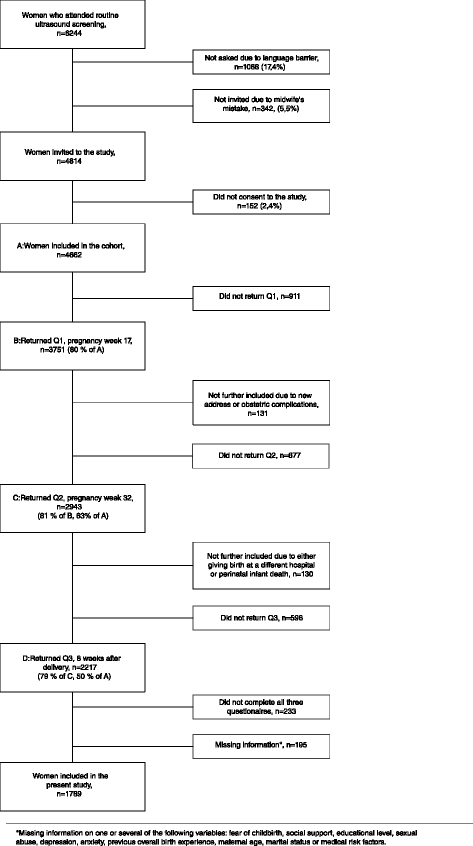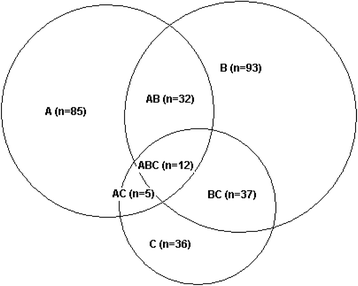Fear of childbirth and elective caesarean section: a population-based study
- PMID: 26382746
- PMCID: PMC4573308
- DOI: 10.1186/s12884-015-0655-4
Fear of childbirth and elective caesarean section: a population-based study
Abstract
Background: This population-based cohort study aimed to investigate the demographic and psychosocial characteristics associated with fear of childbirth and the relative importance of such fear as a predictor of elective caesarean section.
Methods: A sample of 1789 women from the Akershus Birth Cohort in Norway provided data collected by three self-administered questionnaires at 17 and 32 weeks of pregnancy and 8 weeks postpartum. Information about the participants' childbirths was obtained from the hospital records.
Results: Eight percent of the women reported fear of delivery, defined as a score of ≥85 on the Wijma Delivery Expectancy Questionnaire. Using multivariable logistic regression models, a previous negative overall birth experience exerted the strongest impact on fear of childbirth, followed by impaired mental health and poor social support. Fear of childbirth was strongly associated with a preference for elective caesarean section (aOR 4.6, 95% CI 2.9-7.3) whereas the association of fear with performance of caesarean delivery was weaker (aOR 2.4, 95% CI 1.2-4.9). The vast majority (87%) of women with fear of childbirth did not, however, receive a caesarean section. By contrast, a previous negative overall birth experience was highly predictive of elective caesarean section (aOR 8.1, 95% CI 3.9-16.7) and few women without such experiences did request caesarean section.
Conclusions: Results suggest that women with fear of childbirth may have identifiable vulnerability characteristics, such as poor mental health and poor social support. Results also emphasize the need to focus on the subjective experience of the birth to prevent fear of childbirth and elective caesarean sections on maternal request. Regarding the relationship with social support, causality has to be interpreted cautiously, as social support was measured at 8 weeks postpartum only.
Figures
References
-
- Adams SS, Eberhard-Gran M, Eskild A. Fear of childbirth and duration of labor: a study of 2206 women with intended vaginal delivery. BJOG. 2012;116:672–80. - PubMed
MeSH terms
LinkOut - more resources
Full Text Sources
Other Literature Sources
Medical




